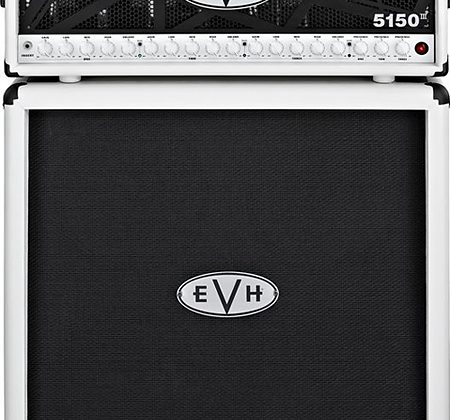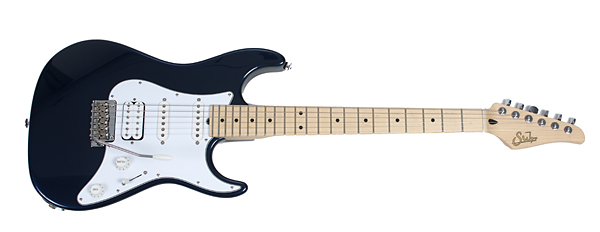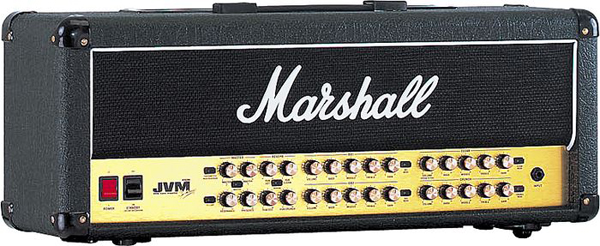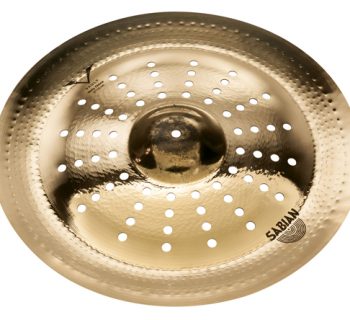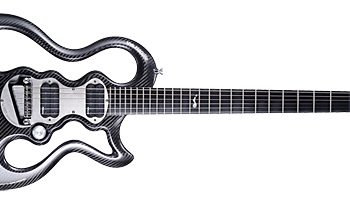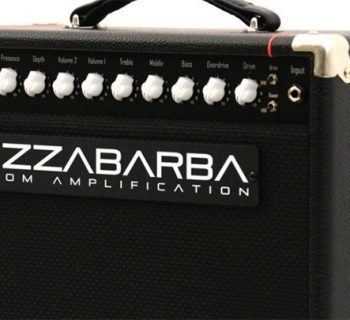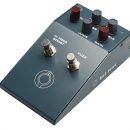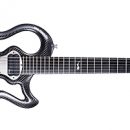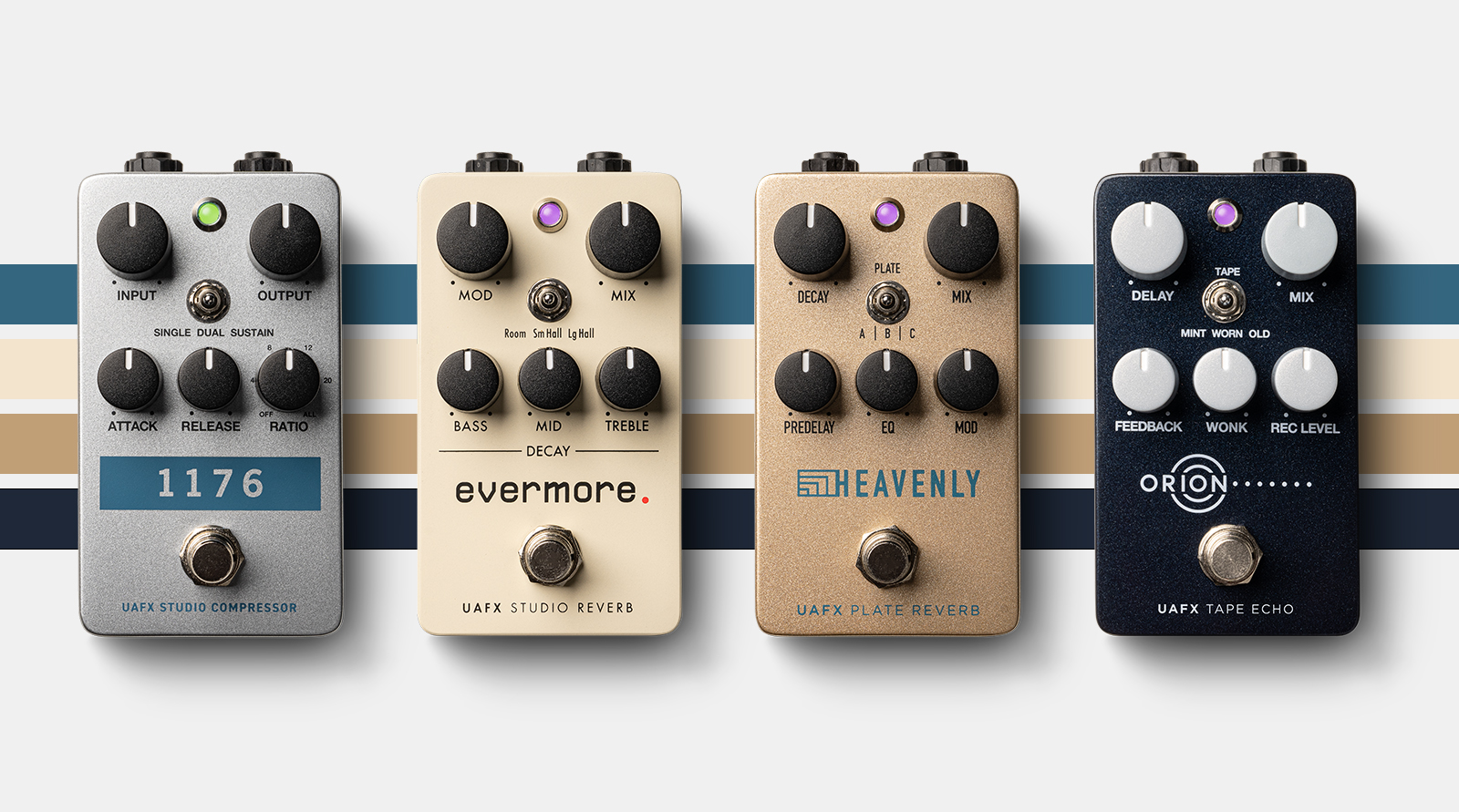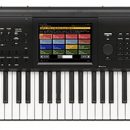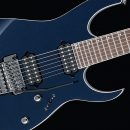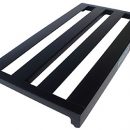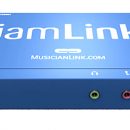Getting a hold of a guitar legend’s secrets, modifications and gear setup has always been a dream of aspiring instrumentalists. Unfortunately, pictures don’t convey internal modifications or actual schematics. And in the case of Eddie Van Halen’s legendary “brown sound,” many players have chased after that sumptuous tone for years.
For those interested in getting the signature Van Halen sound, the dream is now a reality. In partnership with Fender Musical Instruments, Eddie Van Halen has collaborated and developed a signature amplifier worthy of both the names Fender and Eddie – the new EVH brand is a worthy moniker that you’ll be hearing a lot from in the future.
| Category | Value | Rating |
| Features | 20% | |
| Usability | 25% | |
| Sound | 25% | |
| Documentation & Support | 10% | |
| Price | 20% | |
| OVERALL RATING = 3.4 3.6 stars or better: Outstanding, WIHO Award 3 stars or better: Worth considering 2 stars or better: Suited to specific needs 1 star or less: Not recommended |
||
The 5150 III amp not only enables you to obtain Eddie’s definitive tone, but also to own a three-channel amplifier that flows with over-the-top sonic quality: crystal cleans with amazing definition, the brownest of brown sounds with punch and definition, and incredible high-gain saturated tone with never-ending harmonics and sustain.
The EVH 5150 III head and matched 4x12 speaker cabinet demand a podium all their own. This winning combination sounds like no other amp, and despite a basic feature set that lacks some of the extra features found in other three- and four-channel heads, we loved the sound so much that we had to purchase the half-stack for ourselves. Send it back to Fender? No way!
Features
Slightly larger than the average guitar amplifier head, the EVH 5150 III measures 29.75” in length, 10.25” tall, and 11.5” deep. The size is perfectly mated to the extra-wide (slightly) 4x12 cabinet.
Weighing in at only 55 lbs. though, the 5150 III is significantly lighter in weight than many other all-tube power amplifiers. The weightlessness is especially surprising when you realize that this amp is rated at 100 Watts RMS powered by a tube configuration of four 6L6WXT output tubes and eight 12AX7 preamp tubes.
The front control panel of the amp contains one input jack for your guitar and three separate channel groupings each containing Gain, Low, Mid, High and Volume controls. Push-button select switches for channel selection (in case you don’t have access to the included foot controller), and a separate grouping of Presence controls to the far right, each individually assigned to Channel One, Two and Three.
Color-coded channel identification LEDs identify which channel is activated. Channel One lights up green, Channel Two is blue, and Channel Three is red. Corresponding LEDs on the footswitch match these colors, too – a nice touch for visually noting the channel you’re playing (if you guessed that the red LED channel is the high gain channel, you’re right).
The rear control panel of the amp contains a removable power cord, and winding points on the back grill of the amp make storage of the cord simple during transport.
Standard Power and Standby switches are located on the rear of the amp allowing for proper warming and cooling of the amp before turning On/Off.
The 5150 III has a single effects loop and a Preamp Out jack. The effects loop is wired for series operation and lacks any level controls. The Preamp Out allows you to connect directly to another amplifier or straight into a P.A./recording console. In both applications, the absence of a level control takes away from the flexibility of the amp. We would have liked to see a master volume control (it’s a three-channel amp, after all), effects loop level control, and a preamp Send level control.
The 5150 III provides connection points for two speaker cabinets and selectable output impedance – four, eight and sixteen-ohm options, allowing for numerous configurations.

The 5150 III comes equipped with a four-button footswitch utilizing a familiar DIN-7 cable for connection to the head. Note that this is not a MIDI cable with phantom power as some of our readers may be inclined to think. The footswitch contains four Carling-style buttons assigned to channel selection and control of the effects loop. A colored LED identifies the channel selection (matching a colored light on the head) as well as the status of the effects loop.
The EVH 4x12 speaker enclosure weighs in at 89 lbs. Boxier than the average cabinet, it measures 29.25” high, 30” wide and 14” deep. The power handling of the cabinet is rated at 100 watts/16 ohms. The speakers are four 12” Celestion G12EVH speakers, only available (currently) in this particular speaker cabinet. According to Celestion, they are reissues of 1960s twenty-watt Greenbacks with a new label and black-painted can (a nod to their classic “Blackback” speakers). Four removable casters are included with the cabinet.
The 5150 III head and 4x12 cabinet come in either Ivory or Black coverings. Our test model came in the bright white finish that really commands a lot of attention – it is truly beautiful to behold!
Usability
The three-channel EVH 5150 III has simplistic controls arranged in a very user-friendly format providing ease in setup and operation (note that the III in the product name denotes that it is the third generation of a 5150 amp, and the first two generations were manufactured by Peavey).
The very first feature getting our attention was the location of the Power and Standby switch. As with most Fender amplifiers, the locations of these controls are found on the rear panel of the amplifier. As a matter of personal preference, we find it more advantageous and accessible in emergency situations to have at least the Standby switch located on the front panel of the amplifier.
Most notable about the 5150 III are the simple and straightforward tone controls. There are no special voicing switches, frequency boost/cut switches, etc. In fact, the only convenience buttons found on this amp are the channel selection buttons for use without the footswitch. The basic controls provided (Gain, Low, Mid, High, Volume and Presence) allow for ease in setup and sound creation.
The one oddity in control setup was the location of the Presence controls for each channel. We were unsure about the decision to place all three of these controls to the far right side of the amp face rather than within the individual channel EQ clusters as is more typical on multi-channel amps. This did, however, facilitate easier on-the-fly adjustments during live performance without accidentally bumping a volume or gain knob. Whether or not we’ll observe Eddie tweaking his settings on stage remains to be seen, but it’s a good excuse to pick up some Van Halen concert tickets anyway.
The 5150 III contains unique LED displays to identify which channel is engaged at any given time – as well as a large power light indicator at the right of the control panel. We found it very creative and fitting for each channel to have its own appropriate colored LED to identify when it was in use. Channel One is identified by a green LED, Channel Two is identified by a blue LED, and Channel Three is identified by a red LED. In addition, the footswitch contains all three channel buttons, each featuring an LED of matching color to help identify which channel is engaged at all times.
We found the footswitch for the 5150 III to be extremely easy to use. Each channel has its own individual Carling-style button for activation. It’s worthwhile to note that there was virtually zero lag time switching channels, and no audible pops or clicks in the process. If you depend on instantaneous switching from clean to high-gain channels, the 5150 III delivers the quickest performance you could ever find. We also liked the presence of an Effects Loop On/Off button enabling us to bypass (or not) the effects loop if desired.
The control knobs themselves are reminiscent of vintage sun dials, white with a black line marker making it easy to identify their position. However, the only identifiable marking distinguishing channel grouping is the channel button between each group. It was sometimes difficult to distinguish between knobs for each channel due to the all-white motif and equal spacing between all of the knobs. The black lettering of each control function was extremely easy to read against the white background.
You won’t find any reverb inside the 5150 III. It’s completely dry! And when it’s time to add your effects via the effects loop, the lack of any Send or Return level controls could make interfacing with some vintage gear challenging. In our tests, however, pedal board levels were perfectly usable with a variety of pedals from Line 6, Rocktron, and BOSS. Of course with an amp providing this much great tone (oh wait – we’re not in the Sound section yet!), you may not want to add any effects anyway.
Despite the availability of an aesthetically matched EVH 4x12 Speaker Enclosure that includes four special Celestion G12EVH speakers matched to the head, many players will undoubtedly seek to pair this head with their favorite cabinet. We tested the amp with a variety of cabinets without any trouble. We were able to select from the usual 4-, 8- and 16-Ohm ratings via a slide switch on the back control panel. We prefer the durability of individual speaker jacks rated to different impedances as these switches historically have been points of failure on other tube amps, but most players shouldn’t need to make frequent adjustments to the selector switch.
One feature notably absent was a master volume control. In a two-channel format it would not be as important (since you only have two channels to blend). But any amplifier with more than two channels should include a master volume control. We found the three-channel 5150 III difficult to mix when it came to making volume adjustments, mainly due to the sensitivity within the volume controls. On-the-fly adjustments were impossible since changing one channel volume meant having to adjust the other two channels as well. Having a master volume control would have allowed for us to set the volume levels once to get the right mix and then, if need be, just turn up a master volume knob to raise the overall volume of the amp.
Sound
The EVH 5150 III, without a doubt, delivers the goods – tone that Eddie Van Halen would want to play through (and now does). There is no mistaking the crystal clear cleans, huge “brown sound” crunch, and high gain harmonics found in each respective channel – all taking you back to specific recordings featuring Eddie Van Halen. It’s interesting to note that the EVH amp delivers classic Van Halen tone from 6L6 output tubes instead of Eddie’s classic EL-34 equipped Marshall amps. And though this signature amp was meant to produce the sound of the artist, there still lies plenty of room to modify gain settings and tone controls to create your own unique sound while still maintaining quality sound and tone characteristics.
We tested the 5150 III using an Ernie Ball Music Man JP6 guitar for humbucker pickup reference and a Fender American Deluxe Stratocaster for single coil pickup reference – let’s see how they faired.
Channel one of the 5150 III is set up to provide from crystal clean to slightly overdriven tones, and if you love classic “Fender cleans,” you’ll love the sound of this channel. Using the Music Man JP6 loaded with humbuckers, we set the Gain at about the 10:00 position and Volume at about 11:00. For reference, our tone control levels were set as follows: Bass at 1:00, Mid at 11:00, Treble at 12:00 and Presence at about 1:00. The resulting sound was very clean, with the attack of each note was well defined. By adjusting the Tone and Presence controls, the 5150 III produced a very warm, well-rounded tone with plenty of depth.
Setting the Gain control slightly higher to about 11:00 began to add a slightly overdriven tone. Using the Fender Stratocaster required additional gain in order to achieve a bluesy overdrive characteristic of Strat lead tones, but no doubt about it, Channel One provided crystal clean tones with a well-defined attack using low Gain settings and bluesy overdrive tones as the Gain level was increased. The overdrive was well balanced and controllable, resulting in a very warm, bluesy sound that should satisfy both the blues/rock performer and country-style player as alike.
Channel two of the 5150 III is set up to provide that famous “brown sound” crunch, and it certainly does! Our Music Man JP6 provided a tighter overdrive tone where the Strat required more gain to achieve a similar effect, but it still sounded loose and choppy compared to the humbucker-equipped guitar. Given that our preference for sound and gain lean towards humbucker pickup configurations, we proceeded to use the JP6 for the balance of our tonal exploration, though Strat players will still enjoy heavy rock tones from this amp.
The 5150 III provides an excellent brown sounding overdrive tone. As with Channel One, Channel Two provided excellent note definition, even in high-gain settings. With some amps, the gain tends to blend into the actual note, making it dirty and indistinguishable. Not so with the EVH – it sounds as if there was a separate mix of clean and overdrive providing single-note definition and overdrive without sacrificing note clarity.
Even though the crunch sound of this amp was big, we would have preferred slightly more gain available in Channel Two. For more aggressive playing and sounds usable in today’s modern heavy rock and metal, the 5150 III is somewhat limited and does not provide the flexibility necessary to achieve those heavier tones – at least not on Channel Two. However, you may find what you need in Channel Three.
Channel three of the 5150 III is built for high gain distortion, and we mean really high, with a capital H and BOLD LETTERS! Channel Three definitely provided the “Oohs” and “Ahs” when it comes to over-the-top gain and sonic bliss. Without a doubt, it’s “Eruption” and then some. This channel provides all the sustain and rich harmonics one could ever want.
Even with our single coil friend, this channel rocked like there was no tomorrow. With the gain set only half-way to perhaps a touch more than 12:00, the harmonic feedback just wanted to be unleashed – you won’t be able to just sit idle when this channel is engaged without getting some sort of feedback. Once engaged, you had better be ready to shred. A skilled player will tame this wild feedback and play with it lovingly – it’s not going to be very controllable in unskilled novice hands.
The tone controls gave us a very full and round sound, and in combination with the EVH 412 speaker cabinet, we were able to dial in enough bottom end to shake the floor while still maintaining excellent note definition. With many amplifiers, excessive low end tone control settings result in a muddy sound that usually breaks up. The 5150 III is the exception to the rule. The more bottom end we dialed in, the meaner it got! We were able to get that low end percussive sound without the swampy, muddy sludge you hear in less-expensive amps.
One of the most notable attributes of this amp is how clean and quiet it is even at high volume and gain levels. Of course Channel Three produced some noise and feedback normally attributed to high gain, but we were extremely impressed by the lack of unwanted noise or hum found in Channel One and Two, and the third channel was extremely quiet in proportion to the amount of gain being produced.
Just for comparison sake, we also ran the 5150 III head through a Marshall 1960 Vintage series 4x12 cabinet and a Marshall 1936 2x12. It was still nice sounding, but in comparison to the EVH 412 speaker enclosure, the EVH 412 cabinet provided noticeably more depth and punch – we had to roll off the Bass tone controls when connecting back to the EVH 412 speaker cabinet due to the difference in tonal spectrum. Still, if you were planning on using a Marshall cabinet, you won’t be displeased. There is plenty of room to find that sweet spot within the tone controls providing excellent sound quality, but we definitely favored the sound of the matched 4x12 cabinet.
The effects loop on the EVH 5150 III provided excellent sound quality and volume level despite the absence of any kind of level adjustment control. We’re not quite sure what’s going on inside the amp to achieve this, but despite a lack of controls, we were very happy with our pedals from TC Electronic, BOSS, Line 6, and Rocktron in the loop.
Though we found the 5150 III amplifier to provide stellar tone quality, we also found it to be very specialized in its sound and not very flexible without making direct changes to the Gain levels on the head. We would have liked to have a fourth channel or mode switch to get both clean and slight overdrive settings opposed to one or the other from Channel One. As for Channel Two, the flexibility to get slightly higher gain settings would have been preferred.
Documentation and Product Support
The EVH 5150 III and EVH 412 speaker enclosure were accompanied by an Owners Manual explaining the very basic principals of the amps control functions, footswitch connection and control functions, power ratings, connection instructions, and power specifications. The 5150 III manual also provided some sample settings to get started, but be warned… The sample volume levels are quite high and will part your hair and melt ear wax! (We weren’t expecting stage volumes as a starting point for an introduction to this amp.)
We would have liked to to read some information pertaining to maintenance of the amplifier regarding tubes and tube replacement. There is no mention of how to care for or maintain the 5150 III.
The Warranty card (a separate 4”x4” card) contains contact information should you need support, but the information was surprisingly absent from the printed manuals, so don’t misplace the card! At the very minimum, a web address should be supplied to reference additional product documentation and customer support information, but even the EVH website was lacking in detailed support information.
Price
The EVH 5150 III head ($1,999) and the EVH 412 speaker enclosure ($1,099) sell together for $3,100.00.
Taking into consideration an all tube, pro-caliber, three-channel amplifier custom designed by a great guitar legend (with Fender providing the technical know-how) that provides both signature tone and room for creating your own sound, the EVH 5150 III half stack is definitely worthy of exploration and consideration.
Contact Information
EVH
www.evhgear.com
| Evaluation Short-List |
|

